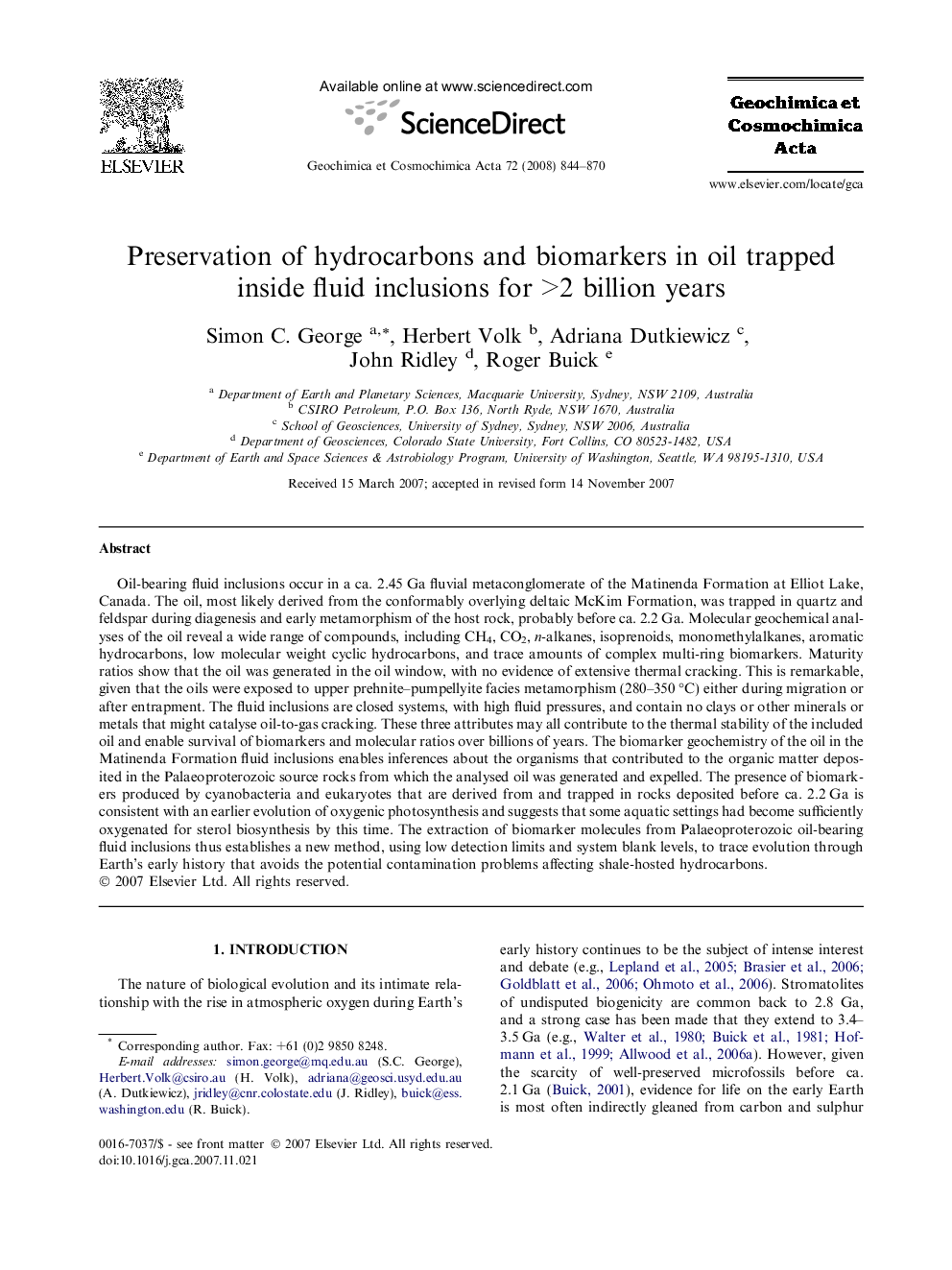| کد مقاله | کد نشریه | سال انتشار | مقاله انگلیسی | نسخه تمام متن |
|---|---|---|---|---|
| 4705188 | 1352946 | 2008 | 27 صفحه PDF | دانلود رایگان |

Oil-bearing fluid inclusions occur in a ca. 2.45 Ga fluvial metaconglomerate of the Matinenda Formation at Elliot Lake, Canada. The oil, most likely derived from the conformably overlying deltaic McKim Formation, was trapped in quartz and feldspar during diagenesis and early metamorphism of the host rock, probably before ca. 2.2 Ga. Molecular geochemical analyses of the oil reveal a wide range of compounds, including CH4, CO2, n-alkanes, isoprenoids, monomethylalkanes, aromatic hydrocarbons, low molecular weight cyclic hydrocarbons, and trace amounts of complex multi-ring biomarkers. Maturity ratios show that the oil was generated in the oil window, with no evidence of extensive thermal cracking. This is remarkable, given that the oils were exposed to upper prehnite–pumpellyite facies metamorphism (280–350 °C) either during migration or after entrapment. The fluid inclusions are closed systems, with high fluid pressures, and contain no clays or other minerals or metals that might catalyse oil-to-gas cracking. These three attributes may all contribute to the thermal stability of the included oil and enable survival of biomarkers and molecular ratios over billions of years. The biomarker geochemistry of the oil in the Matinenda Formation fluid inclusions enables inferences about the organisms that contributed to the organic matter deposited in the Palaeoproterozoic source rocks from which the analysed oil was generated and expelled. The presence of biomarkers produced by cyanobacteria and eukaryotes that are derived from and trapped in rocks deposited before ca. 2.2 Ga is consistent with an earlier evolution of oxygenic photosynthesis and suggests that some aquatic settings had become sufficiently oxygenated for sterol biosynthesis by this time. The extraction of biomarker molecules from Palaeoproterozoic oil-bearing fluid inclusions thus establishes a new method, using low detection limits and system blank levels, to trace evolution through Earth’s early history that avoids the potential contamination problems affecting shale-hosted hydrocarbons.
Journal: Geochimica et Cosmochimica Acta - Volume 72, Issue 3, 1 February 2008, Pages 844–870